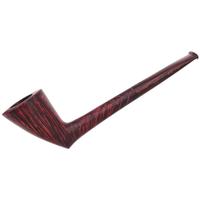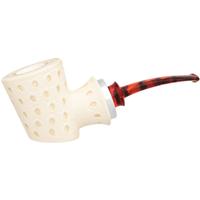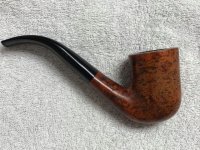@FurCoat Nice pipe - I don't have any black ones!KC flake in a clay. Got this recently along with a white clay, both with vulcanite stems. I love the way clay pipes smoke, but dislike the clay stem. View attachment 84667
***What Are You Smoking, June 2021?***
- Thread starter JimInks
- Start date
You are using an out of date browser. It may not display this or other websites correctly.
You should upgrade or use an alternative browser.
You should upgrade or use an alternative browser.
- Status
- Not open for further replies.
GL Pease Chelsea Morning from October 2011 in a Paykoc Meerschaum Bulldog
C
carolinasmokes
Guest
Just came in from the deck, it's been a great afternoon smoking bowl after bowl of Carter Hall in a few different cobs, now it's time to get some dinner going so I can have that after dinner smoke and coffee. See ya.
Speaking about the weird and wonderful patents applied for and granted from the late 19th century in an effort to create 'the perfect pipe' most are hidden from view (Masta, Youngs, Peterson, Lamberts Drybore etc.) and unless you disassemble the pipe and look inside the chamber and/or at the attachments to the tenon you wouldn't know the difference compared to a regular pipe.
The patents that are visible from the outside can seem extraordinary to us today and on some examples it's hard to know how the patent works and exactly what benefit it provides.
One of the most unusual I've come across is this unidentified HOC Syphon patent 13397 made in Strasbourg ...

... of a type I've only seen once before on a clay pipe with removable bowl

The patents that are visible from the outside can seem extraordinary to us today and on some examples it's hard to know how the patent works and exactly what benefit it provides.
One of the most unusual I've come across is this unidentified HOC Syphon patent 13397 made in Strasbourg ...

... of a type I've only seen once before on a clay pipe with removable bowl

My lizard appears to have done a runner but when I locate it I'll take a pic to compare skins with your pipe.Afternoon everyone, unfortunately due to a lack of sleep today has been rather unproductive and I’ve only just finished my second bowl of the day, Blockade Runner in the Snakeskin Longchamp. Closer inspection is making me think it’s actually lizard skin of some nature rather than snake, some poor creature died to provide it anyway.
Three Nuns Green up next in the bent Ornsby Pipe. View attachment 84879
In the meantime here's snakeskin, baby croc and adult croc skin to compare

Sorry, did you say ostrich leg or egg?I’m not sure whether it was ever used on those or not, but ostrich leg can look quite a bit like lizard as well.

Proved useful for storing pipe tobacco once upon a time long before I bought the Le Parfait jars
After several days of not having time for a pipe it’s Curly Block in a lattice globe meer.
It’s always interesting how a few days away from the pipe sharpens the palate.
It’s always interesting how a few days away from the pipe sharpens the palate.
SWR in MM St. Paddy's Day 2021. Needed a nic fix.
- Status
- Not open for further replies.























